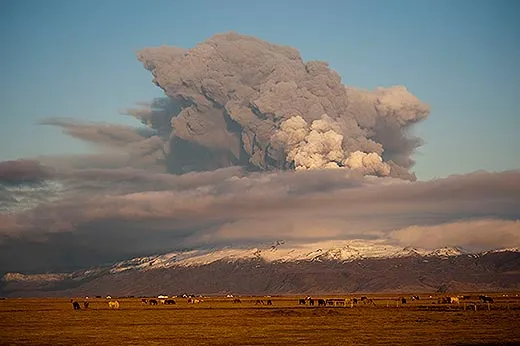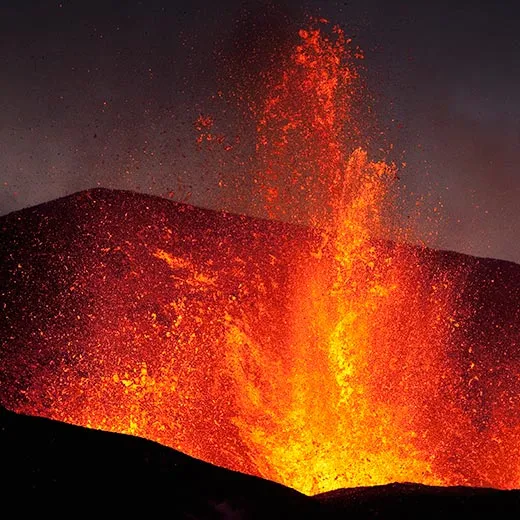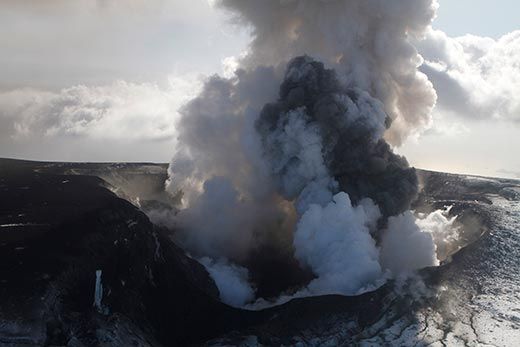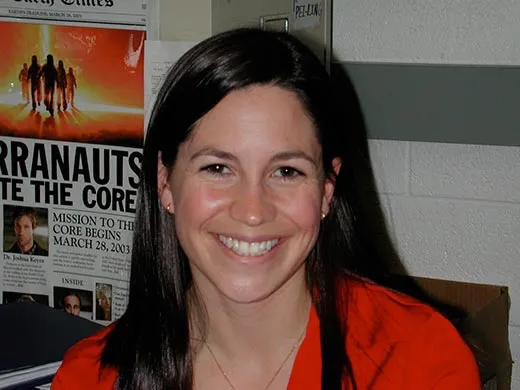What We Know From the Icelandic Volcano
Geologist Elizabeth Cottrell discusses the effects of the Icelandic volcanic eruption and the work of the Smithsonian’s Global Volcanism Program
/https://tf-cmsv2-smithsonianmag-media.s3.amazonaws.com/filer/volcano-erupts-near-Eyjafjallajoekull-631.jpg)
Smithsonian’s Global Volcanism Program has been following the eruption of the Icelandic volcano Eyjafjallajökull. Elizabeth Cottrell, a geologist at the National Museum of Natural History, spoke with Smithsonian magazine’s Erica R. Hendry about the nature of the volcano and the possible consequences of its eruption.
Could you give us a sense of how big this volcano is? And how long could the eruption go on?
I would say we don’t know how long the eruption could go on. The last eruption started in 1821 and went until 1823. This volcano is not one of the well-known volcanic centers of Iceland. Its neighbors—Katla, Hekla, Krafla—those are what we think of as the major volcanic centers of Iceland. It just happens to be that the ash from this volcano is going over a very populated area with a lot of heavy air travel. That just goes to show that you can still cause a lot of havoc to humans even with a volcano like this. The thing that makes this an interesting eruption is it’s not "effusive," meaning it’s not strictly a runny lava coming out like we often see in Hawaii. It’s an explosive eruption. An eight-point scale called the “volcanic explosivity index“ (VEI) allows you to compare eruptions and volcanoes. A firm number won't be assigned for some time, but so far, about 110 million cubic meters of tephra have been ejected during this eruption, and the plume has gone about nine kilometers into the air, so that’s a VEI of 4. For reference, the 1991 eruption of Pinatubo in the Philippines had a VEI equal to 6.
Could the eruption set off other volcanoes nearby?
In the historical record, when Eyjafjallajökull has erupted, Katla has also erupted. The nature of eruption triggering, though, is not well understood. I don’t think anyone is going to definitely predict right now that Katla will erupt. The historical record would be the only reason to suspect that, but right now I don’t think there are signs of unrest at Katla.
How is Smithsonian’s Global Volcanism Program keeping track of the Icelandic volcano?
The Global Volcanism Program documents eruptive histories for all known active volcanoes on the planet for which we can document physical information, such as the VEI, eruption durations and dates. You can go to Eyjafjallajökull on the program’s web page right now and get the history of this volcano. It is the first place people go to find the basic information about a volcano.
We have a network of individuals around the world who send us information. Our scientists here compile that information, and we have someone stationed here from the USGS Volcano Hazards Program who puts out a weekly report of eruptive activity all over the globe. A subset of this information gets compiled into the volcano reference file, which is a database of all active volcanoes globally. The Global Volcanism Program has been in operation since 1968 and we look back at least 10,000 years on a global scale—we call any volcano “active” if it has erupted in the last 10,000 years.
How many volcanoes erupt in a year, and how many of those cause problems for people?
About 70, is our standard answer. In the last ten years, there was a low of 64 in 2001 and 2003. There was a high of 78 in 2008. There are 20 to 30 active at any given time. That does not include seafloor volcanoes that are erupting all the time, because hundreds of volcanoes on the seafloor may be erupting at any given minute.
Locally, probably all volcanoes cause problems for people. In Iceland, for example, the glacier that sits atop Eyjafjallajökull is melting, which is causing catastrophic flooding in Iceland. The Soufrière Hills eruption in the Caribbean caused an evacuation of the entire island of Montserrat; that’s in the recent memory of the public. You can look at Hawaii right now. Ongoing eruptions there shut down roads all the time. I think Eyjafjallajökull is unprecedented in terms of the scope of the air travel shutdown. In other cases, there have been isolated incidents of planes going down or losing power due to a volcanic ash cloud, especially in Indonesia, but because of the location of the volcano, Eyjafjallajökull seems to be an unprecedented event in terms of global, far-reaching consequences.
/https://tf-cmsv2-smithsonianmag-media.s3.amazonaws.com/accounts/headshot/erica-hendry-240.jpg)





/https://tf-cmsv2-smithsonianmag-media.s3.amazonaws.com/accounts/headshot/erica-hendry-240.jpg)